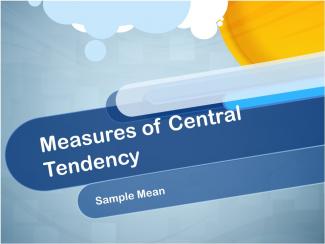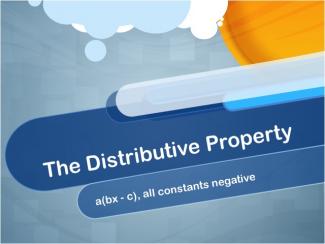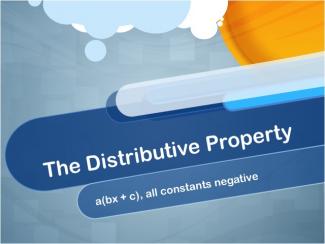Content Showcase: Video Library
|
Media4Math's Video Library is a collection of videos on key topics in pre-algebra and algebra. Each video includes several worked-out examples that clearly explain the key concept. All videos include real-world applications of math.This is a growing collection of resources, so keep coming back!(Want to learn more about our subscription packages? Click here.)
|
Video Library
| Title | Thumbnail Image | Description |
|---|---|---|
Closed Captioned Video: Place Value--Counting by Tenths |

|
Closed Captioned Video: Place Value--Counting by TenthsIn this video tutorial, students are shown how to use their place value skills to count by tenths. Three detailed examples show how to use counting tenths to solve problems. |
Closed Captioned Video: Place Value--Making Tens |

|
Closed Captioned Video: Place Value--Making TensIn this video tutorial, students are shown how to use their place value skills to make tens. Four detailed examples show how to use making tens to simplify addition. |
Closed Captioned Video: Counting and Subtraction |

|
Closed Captioned Video: Counting and SubtractionIn this video tutorial, students are shown how to use their counting skills to subtract two numbers. Three detailed examples show how to use counting to subtract. |
Closed Captioned Video: Counting and Addition |

|
Closed Captioned Video: Counting and AdditionIn this video tutorial, students are shown how to use their counting skills to add two numbers. Three worked-out examples provide an opportunity for students to see how to use their counting skills to add. |
Closed Captioned Video: Counting Strategies |

|
Closed Captioned Video: Counting StrategiesIn this video tutorial, students are shown how to use Skip Counting and Counting On to quickly and accurately count large numbers of items. This video lays the groundwork for developing addition skills. |
Closed Captioned Video: Skip Counting |

|
Closed Captioned Video: Skip CountingIn this video tutorial, students are shown how to Skip Count by 2's, 5's, and 10's using three different examples. The video builds on the concept of counting and cardinality. |
Closed Captioned Video: Counting On |

|
Closed Captioned Video: Counting OnIn this video tutorial, students are shown how to use the technique of Counting On to improve the speed and accuracy of their counting, using three different examples. The video develops the concept of counting and cardinality. |
Closed Captioned Video: Counting to 20 |

|
Closed Captioned Video: Counting to 20In this video tutorial students learn how to calculate the mean when all of the data items are positive numbers. Includes three real-world examples. |
Closed Captioned Video: Measures of Central Tendency: Sample Mean |

|
Closed Captioned Video: Measures of Central Tendency: Sample MeanIn this video tutorial students learn about sample mean from a random sampling of data. All examples involve normally distributed data with a known population mean and standard deviation. Includes three real-world examples. |
Closed Captioned Video: Measures of Central Tendency: The Mean and Normally Distributed Data |

|
Closed Captioned Video: Measures of Central Tendency: The Mean and Normally Distributed DataIn this video tutorial students learn about normally distributed data and how to identify the population mean from the normal distribution. Standard deviation is briefly introduced. Includes three real-world examples. |
Closed Captioned Video: Measures of Central Tendency: Weighted Mean |

|
Closed Captioned Video: Measures of Central Tendency: Weighted MeanIn this video tutorial students extend their understanding of mean by looking at examples of weighted means (sometimes referred to as weighted averages). Includes three real-world examples. |
Closed Captioned Video: Measures of Central Tendency: Finding the Median of a Data Set |

|
Closed Captioned Video: Measures of Central Tendency: Finding the Median of a Data SetIn this video tutorial students learn how to find the median of a data set. The mean is also calculated so that students can learn similarities and differences between these two measures of central tendency. Includes three real-world examples. |
Closed Captioned Video: Place Value: Rounding Decimals |

|
Closed Captioned Video: Place Value: Rounding DecimalsIn this tutorial, students learn how to write decimals in rounded form using place value techniques. |
Closed Captioned Video: Place Value: Rounding Whole Numbers |

|
Closed Captioned Video: Place Value: Rounding Whole NumbersIn this tutorial, students learn how to write whole numbers in rounded form using place value techniques. |
Closed Captioned Video: Place Value: Reading and Writing Decimals in Expanded Form |

|
Closed Captioned Video: Place Value: Reading and Writing Decimals in Expanded FormIn this tutorial, students learn how to write decimals in expanded and standard form using place value techniques. |
Closed Captioned Video: Place Value: Reading and Writing Whole Numbers in Expanded Form |

|
Closed Captioned Video: Place Value: Reading and Writing Whole Numbers in Expanded FormIn this tutorial, students learn how to write whole numbers in expanded and standard form using place value techniques. |
Closed Captioned Video: Place Value: Organizing Data Using Place Value |

|
Closed Captioned Video: Place Value: Organizing Data Using Place ValueIn this tutorial, students arrange decimal data using place value techniques. |
Closed Captioned Video: Place Value: Comparing and Ordering Decimals Using Place Value |

|
Closed Captioned Video: Place Value: Comparing and Ordering Decimals Using Place ValueIn this tutorial, students learn how to compare and order decimals using place value techniques. |
Closed Captioned Video: Place Value: Comparing and Ordering Whole Numbers Using Place Value |

|
Closed Captioned Video: Place Value: Comparing and Ordering Whole Numbers Using Place ValueIn this tutorial, students learn how to compare and order whole numbers using place value techniques. |
Closed Captioned Video: The Distributive Property: a(bx - c), all constants negative |

|
Closed Captioned Video: The Distributive Property: a(bx - c), all constants negativeVideo Tutorial: The Distributive Property: a(bx - c), all constants negative. In this video, we will use the distributive property with an expression of the form a(bx - c), all negative. |
Closed Captioned Video: The Distributive Property: a(bx - c), a negative, b and c positive |

|
Closed Captioned Video: The Distributive Property: a(bx - c), a negative, b and c positiveVideo Tutorial: The Distributive Property: a(bx - c), a negative, b and c positive. In this video use the distributive property with an expression of the form a(bx - c), a negative, b and c positive. |
Closed Captioned Video: The Distributive Property: a(bx - c), all constants positive |

|
Closed Captioned Video: The Distributive Property: a(bx - c), all constants positiveVideo Tutorial: The Distributive Property: a(bx - c), all constants positive. In this video use the distributive property with an expression of the form a(bx - c), all constants positive. |
Closed Captioned Video: The Distributive Property: a(bx + c), all constants negative |

|
Closed Captioned Video: The Distributive Property: a(bx + c), all constants negativeVideo Tutorial: The Distributive Property: a(bx + c), all constants negative. In this video use the distributive property with an expression of the form a(bx + c), all negative. |
Closed Captioned Video: The Distributive Property: a(bx + c), a negative, b and c positive |

|
Closed Captioned Video: The Distributive Property: a(bx + c), a negative, b and c positiveVideo Tutorial: The Distributive Property: a(bx + c), a negative, b and c positive. In this video, we will use the distributive property with an expression of the form a(bx + c), a negative, b and c positive. |
Closed Captioned Video: The Distributive Property: a(bx + c), all constants positive |

|
Closed Captioned Video: The Distributive Property: a(bx + c), all constants positiveVideo Tutorial: The Distributive Property: a(bx + c), all constants positive. In this video use the distributive property with an expression of the form a(bx + c), all constants positive. |